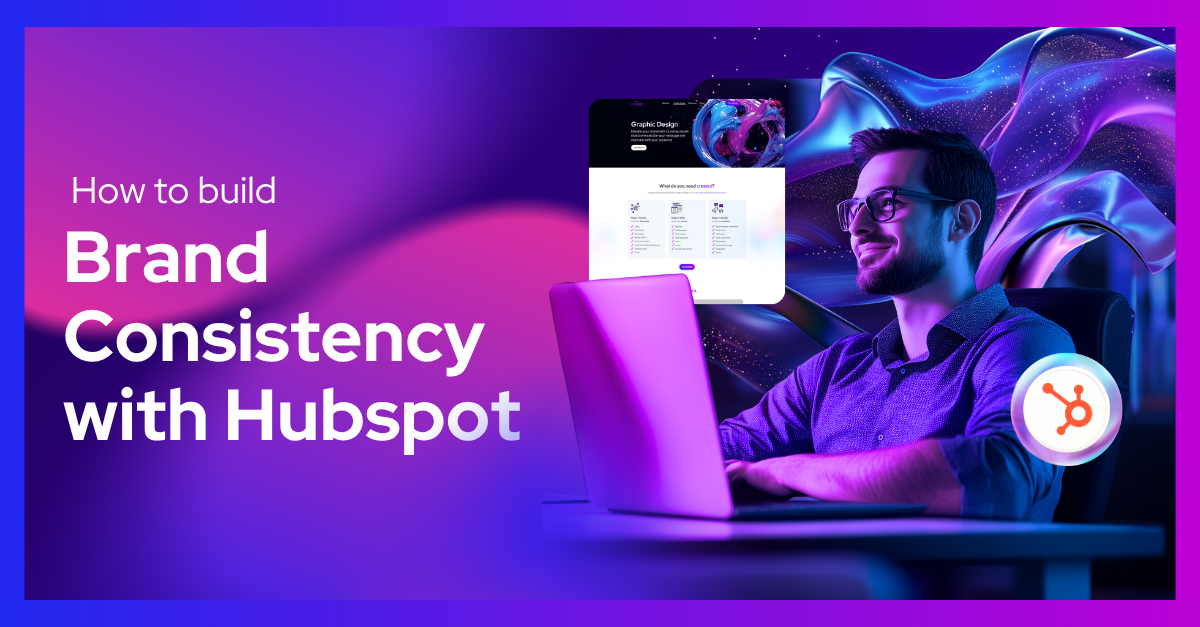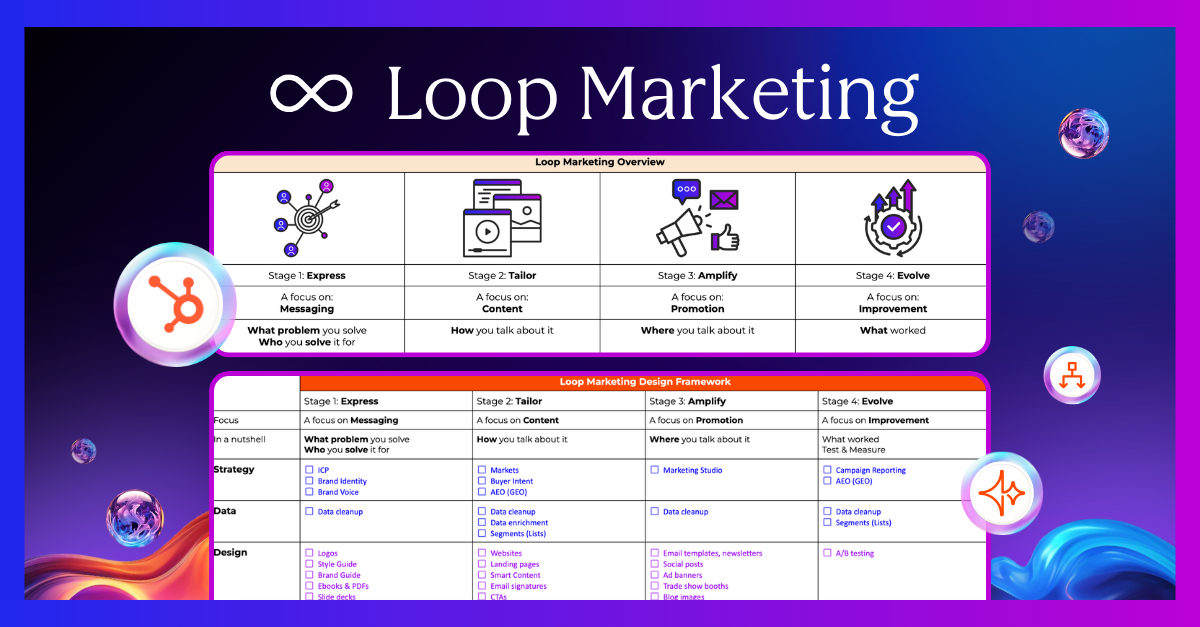Loop Marketing Explained
HubSpot launched their new marketing playbook –Loop Marketing– a few weeks back at their INBOUND conference. It’s worth chatting about: to get a...

Picture this: A potential customer discovers your company through a LinkedIn ad. The design catches their eye, clean, professional, and trustworthy. They click through to your website, which uses completely different fonts and colours. Confused but still interested, they sign up for your newsletter. The welcome email arrives looking like it's from an entirely different company. By the time they see your social media posts, they're wondering if they're following the right business. This isn't just a design problem. It's a $2.3 million revenue problem.
Research shows that consistent brand presentation across all platforms can increase revenue by up to 23%. For a company generating $10 million annually, that's $2.3 million left on the table simply because your LinkedIn ad doesn't match your website, which doesn't match your emails.
But here's what most business leaders don't realize: the real cost isn't just lost revenue. It's lost trust, lost recognition, and lost competitive advantage in an increasingly crowded marketplace.
Inconsistent branding creates what psychologists call cognitive friction. Your prospects have to work harder to recognize you, trust you, and remember you. In a world where B2B buyers interact with your brand 7-13 times before making a purchase decision, that extra mental effort often means lost opportunities.
Here's where brand consistency becomes a competitive weapon rather than just a nice-to-have design consideration. Today's B2B buyers encounter your brand across 7-13 different touchpoints: search results, social media, your website, blog content, email campaigns, webinars, sales presentations, proposals, and post-sale communications. Each interaction either builds cumulative trust or creates cumulative confusion.
The difference between these two scenarios isn't just perception; its measurable business impact. Companies with consistent brand presentation are 3-4 times more likely to experience brand visibility, can command premium pricing, and see accelerated sales cycles as stakeholders reach consensus faster.
The HubSpot Integration Advantage
Sources
Demand Metric (with Lucidpress). The Impact of Brand Consistency Benchmark Report — finding: consistent brand presentation could lift revenue~23%. d2slcw3kip6qmk.cloudfront.net+1
Lucidpress/Marq. State of Brand Consistency (2019 press note: up to 33% revenue increase). PR Newswire
Marq (Lucidpress). State of Brand Consistency (2021 update). pub.lucidpress.com
McKinsey. “Five fundamental truths: How B2B winners keep growing” — many buyers now use >11 touchpoints. McKinsey & Company
Direct Marketing Partners. “Why It Takes 7–13+ Touches to Generate a Qualified Lead” (PDF). Direct Marketing Partners
Gartner. B2B Buying: How Top CSOs and CMOs Optimize the Journey — complex, looping journeys; enable confident buying. Gartner
Gartner. “Sense Making” selling approach reduces buyer confusion and regret (press release/overview). Gartner
Kantar. “Why pricing power is a brand’s greatest asset” (BrandZ perspective on premium pricing). Kantar
Kantar. “How marketing adds value to your brand” (price-premium evidence). upg-cd-ne.kantar.com
HubSpot KB. Use themes — set fonts, colours, spacing globally via theme settings. HubSpot Knowledge Base
HubSpot KB. Edit theme settings — centralise style tokens. HubSpot Knowledge Base
HubSpot Dev Docs. Themes & fields; Modules — reusable components for pages/emails. HubSpot Developers+1
HubSpot KB. Create and manage smart content rules — personalise within one system. HubSpot Knowledge Base
HubSpot KB. Use progressive fields in forms — shorten first-touch, collect more later. HubSpot Knowledge Base
HubSpot KB. Structure and customize template layouts — drag-and-drop templates & modules. HubSpot Knowledge Base
HubSpot KB. Approve HubSpot content — content approval before publishing. HubSpot Knowledge Base
HubSpot KB. Request approval to publish a social media post.

HubSpot launched their new marketing playbook –Loop Marketing– a few weeks back at their INBOUND conference. It’s worth chatting about: to get a...

Most users don’t read websites. They scan. They decide in seconds whether to stay or leave. We live in an attention economy, where time on screen is...